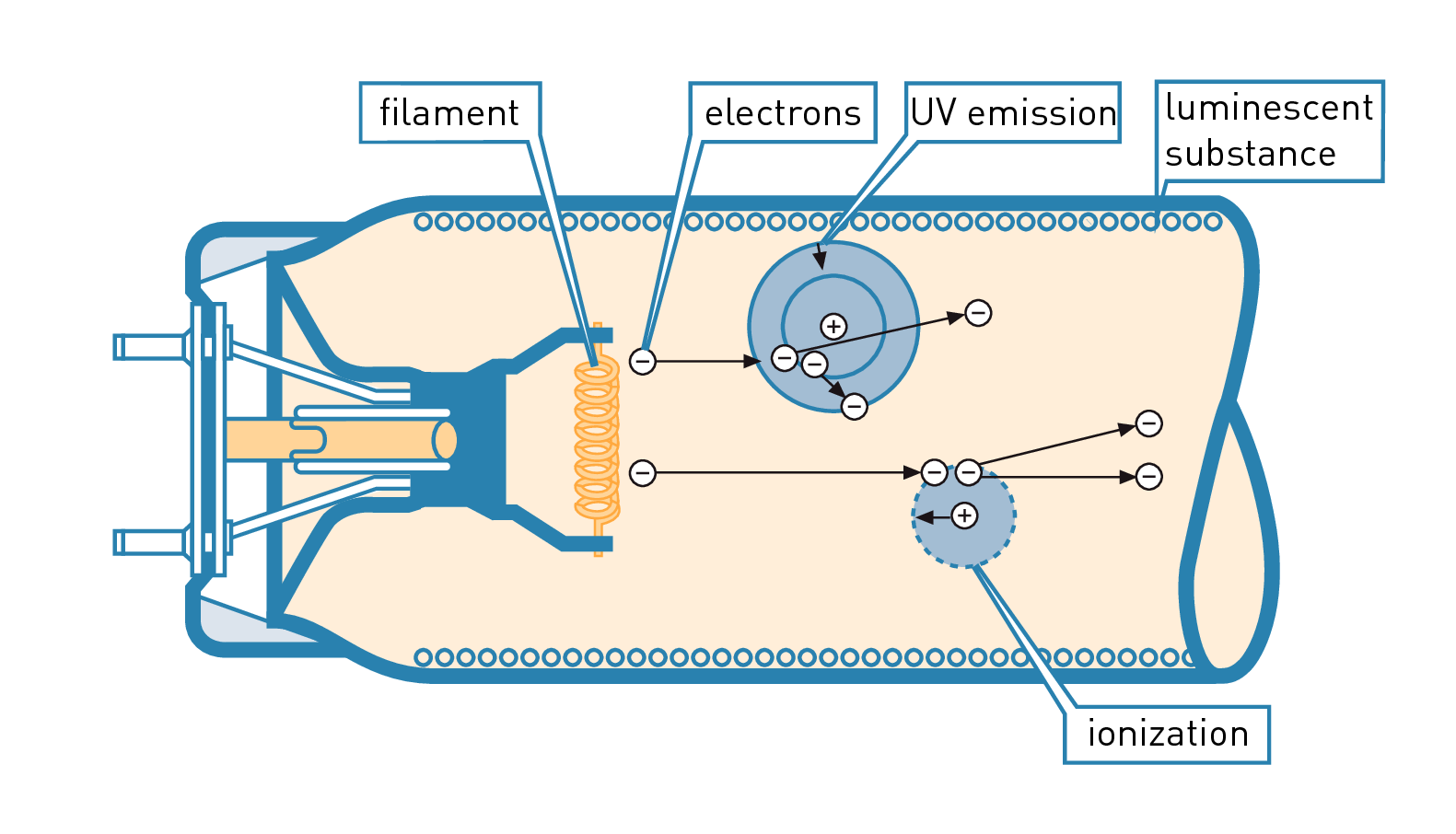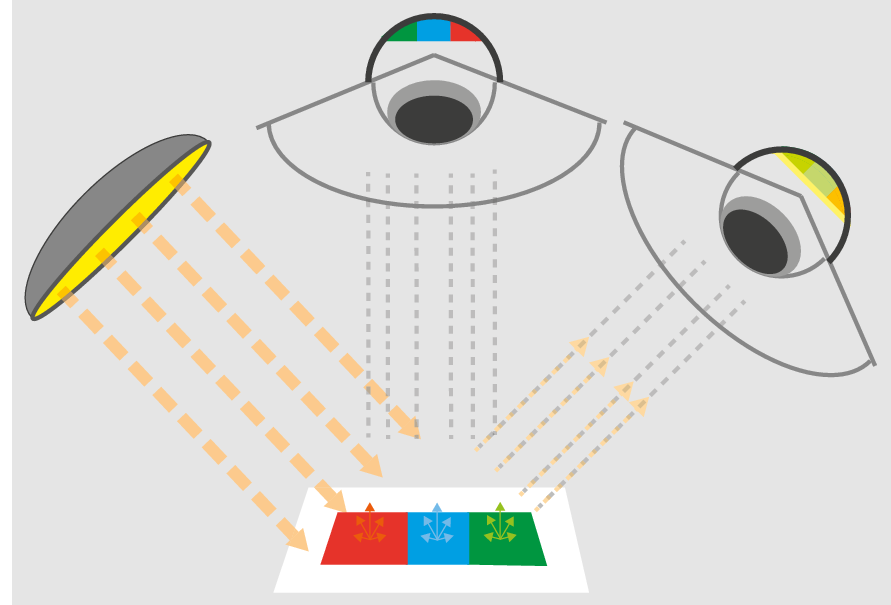The field of vision is the spatial area of visual perception. With binocular vision and straight, vertical posture of the head, the field of vision encompasses 60° upwards, 70° downwards and over 80° horizontally to each side. Since the receptors (cones) responsible for colour vision are predominantly located in the centre of the retina, the field of vision for colour perception is significantly smaller. In terms of adaptation, only a central field of ± 20° is effective.
F, G, I
Low-pressure mercury discharge lamp with an added fluorescent substance intended to generate visible light (see also chapter ).

There is a distinction between physiological and psychological glare as well as direct and reflected glare. Physiological glare objectively and measurably leads to decreased visual performance immediately upon exposure. This glare effect is described through equivalent veiling luminance, which covers the visual detail reproduced on the retina like a veil and thus debases contrast and acuity. Equivalent veiling luminance leads to a limit value (threshold value) increment for the adaptation luminance necessary to recognize a visual detail. This threshold increment (TI) is used, for example, in street lighting as a measure for physiological glare (TI method) and is defined in numbers in the relevant standards, e.g. TI ≤ 15%. Another method used for evaluating glare in outdoor lighting, the glare rating (GR) method, is also based on a glare formula using veiling luminance. Psychological glare usually only leads to a subjective perception of interference (discomfort) after some time has elapsed. Psychological glare caused by luminaires with elevated luminance in indoor lighting is rated via the unified glare rating (UGR) method.
Direct glare impacts the eye directly and immediately through elevated luminance levels (e.g. in luminaires) and can cause physiological or merely psychological effects.
Reflected glare has the same effects as direct glare. It is caused by the reflection of high luminance levels from shiny surfaces. Moreover, it causes an additional decrease in contrast since the directly reflected light outshines the visual information of the light reflected from the object in a scattered way.
The following rule applies: The lower the gloss level of a surface – e.g. the better the antireflection coating on screens or glass surfaces – the higher the admissible luminance for luminaires and luminous surfaces can be without causing disturbing effects. Moreover, reflected glare can be effectively avoided by choosing a suitable geometric alignment of the visual task in relation to the potential source of glare. An elevated level of ambient luminance also reduces both direct and reflected glare of a light source (see also chapter “Direct glare” and “Reflected glare on horizontal visual tasks”).

Illuminance E is the quotient of the Luminous flux Φ (Unit: lumen) incident on a surface (unit: lumen) and the size of said illuminated area A (Unit: m2), iwhich can be horizontal, vertical, tilted or curved. According to location and shape of the illuminated surface, there is a distinction between horizontal (Eh), vertical (Ev), semi-cylindrical (Esc), cylindrical (Ez) and semi-spherical (Ehs) illuminance


Unit: lux (lx).
1lx = 1lm/m2.
Average illuminance E (with a horizontal bar on top of the letter E) is the arithmetic average of the local illuminance at regular, defined points on a surface at a given time.
The minimum value Emin / maximum value Emax of the illuminance is the lowest / highest illuminance value at a point on the reference surface at a given time. The aforementioned points, which are distributed across the surface at regular intervals, are averaged. Furthermore, due to changes over time (degradation), there is a distinction between Initial Illuminance and Maintained illuminance.
Through the IP protection rating classification, electrical equipment is labelled according to its protection against the ingress of solid and liquid substances. The ingress protection rating is particularly relevant for electrical safety of e.g. luminaires in various applications (see also chapter ).
Local average illuminance at commissioning of a new lighting installation. It is derived from maintained illuminance and maintenance factor.
Initial Illuminance = maintained illuminance/maintenance factor
Example: 625 lx = (500/0.80) lx
Local average luminance at commissioning of a new lighting installation (see also "Initial illuminance").